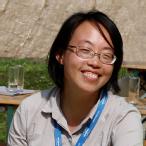WMS Events Calendar
Please see this page for MB ChB events.
BMS Seminar: From a heavy mouse to human black cartilage: how solid-state NMR can give new insight on the extracellular matrix, Dr Ying Chow, Assistant Professor, Department of Physics, University of Warwick
Abstract: Solid-state nuclear magnetic resonance (ssNMR) is a versatile technique that can provide structural information on complex materials in functionally-relevant states. An emerging area of ssNMR research concerns the extracellular matrix (ECM), a class of highly diverse biological materials composed of a heterogeneous mixture of molecular entities, including proteins, glycans, glycoproteins, and other biomolecules. These molecules show specific interactions and organisation at a range of length scales. SsNMR can contribute structural insight at the atomic length scale, potentially on ECM and ex vivo tissues samples with minimal processing or purification.
Biomolecular applications of ssNMR rely on the detection of stable isotopes such as 13C and 15N, which are of low natural abundance (1% and 0.4% respectively). A common approach used in biomolecular ssNMR is to produce isotopically-enriched samples via recombinant expression and purification, which enables the use of ssNMR to solve structures and characterize protein dynamics. While we do not expect to solve structure in the same way for biomolecules in the ECM and tissue samples, ssNMR can contribute other types of structural information, such as carrying out an unbiased survey of the composition or observing molecular modifications that arise as a consequence of disease.
In my research thus far, I have focused on using ssNMR to study collagen-rich ECMs. Collagen forms the bulk of the immediate structural and signalling environment for almost all cells in solid tissues in our body. Although the overall triple-helical structure of collagen has been known since 1961, the diversity of roles played by the collagen family of proteins in homeostasis and disease indicate open questions yet to be explained as specific perturbations to collagen structure. During my PhD, we showed that modern 2D NMR experiments can be carried out on isotopically-enriched mouse bone to give insight on biomineralization and molecular dynamics of collagen in mineralized tissue.
One important challenge faced by ssNMR is low sensitivity, which can be overcome by dynamic nuclear polarization (DNP), a recent technological improvement in signal enhancement that was the focus of my postdoctoral research. In particular, I was able to apply DNP-enhanced ssNMR on tissue obtained from patients with alkaptonuria, a rare disease that leads to a striking brown pigmentation of cartilage accompanied by rapid-onset osteoarthritis. From this interdisciplinary collaboration, we gained new insights into the chemical identity of the pigment and proposed a new route to collagen structural disruption that alkaptonuria and osteoarthritis could have in common.
 Biography: Wing Ying Chow is an Assistant Professor in Physics who started at the University of Warwick in February 2022. Prior to joining Warwick, she was a postdoctoral researcher funded by the National Center for Scientific Research (CNRS) at the Interdisciplinary Research Institute of Grenoble (IRIG) in France working with Sabine Hediger and Gaël de Paëpe. In 2014-2019, she worked at the Leibniz-Forschungsinstitut für Molekulare Pharmakologie in Berlin, Germany with Hartmut Oschkinat. She obtained her PhD in 2014 from the University of Cambridge, UK, under the supervision of Melinda Duer.
Biography: Wing Ying Chow is an Assistant Professor in Physics who started at the University of Warwick in February 2022. Prior to joining Warwick, she was a postdoctoral researcher funded by the National Center for Scientific Research (CNRS) at the Interdisciplinary Research Institute of Grenoble (IRIG) in France working with Sabine Hediger and Gaël de Paëpe. In 2014-2019, she worked at the Leibniz-Forschungsinstitut für Molekulare Pharmakologie in Berlin, Germany with Hartmut Oschkinat. She obtained her PhD in 2014 from the University of Cambridge, UK, under the supervision of Melinda Duer.
